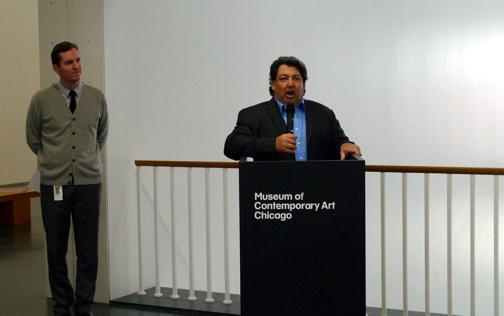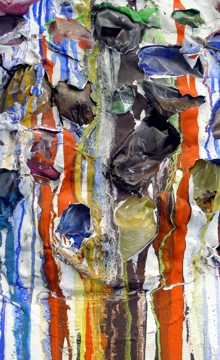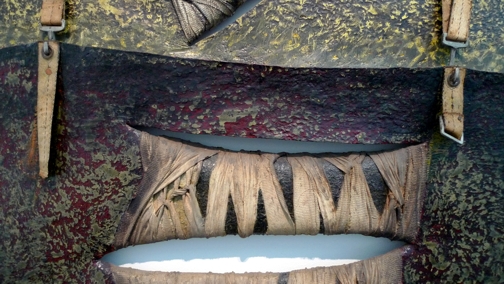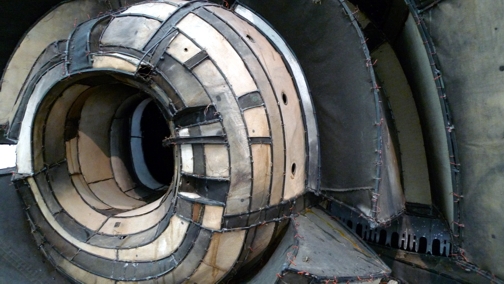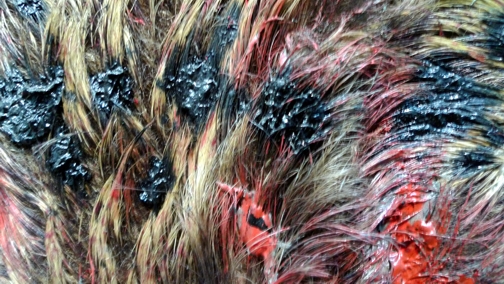There's a new show that just opened at Chicago's Museum of Contemporary Art, curated by the legendary L.A. curator Paul Schimmel. Destroy the Picture: Painting the Void is an exhibit that looks at the global redirection of art immediately after World War II, which reinforces the notion that the same good idea can happen in multiple places at once.
In an artistic response to the lingering end of the horror of war and the resulting realignment of global forces, artists around the planet began rupturing the sanctity of the picture plan by puncturing, tearing and slashing it. Or by throwing at, or attaching aberrant objects on it. Forcefully, this happened in Japan, Europe and the U.S. The word 'iconoclast' comes to mind.
The press preview opened with a dynamic recreation Saburo Murakami's son of his 1955 piece titled Entrance. All of us in the room were certain there was nothing behind the large gold painting but wall. Figuratively and literally, the artist(s) take the viewers through the picture plane and metaphorically entered a new world.
Even before he was a wunderkind discovery of Leo Castelli's, the young (mid 20's) Robert Rauschenberg was making groundbreaking, tactile art as see in this all black piece from 1952.
There are lots of subplots here; artists who were significant and faded (Alberto Burri), artists who mattered and then didn't (Salvatore Scarpitta), and artists who were innovate and lapsed into decorative (the American, Niki de Saint Phalle) who loaded globs of paint into plaster, affixed it to the canvas, and then shot it. And all of them, with their own innovative and concurrent alteration of the picture plane paved the way for so much art that has come since. (Almost all the pictures are small details of larger works, so I could share the surface activity with you.)
Do you notice that the radically new approaches to painting were happening on multiple contents? In Europe, Lucio Fontana was one of the first to puncture and then incise the canvas.
Yves Klein took huge torches to canvasand cardboard, with a fireman standing nearby. The first part of the video is fascinating. (Did any serious, innovative artist ever have more fun than Yves Klein?)
Salvatore Scarpitta made beautiful pieces with attachments that pulled at the picture.
Lee Bontecou came along in the early 60's and took the disruption to a new level, before she bowed out and took a long hiatus because of her fatigue from the art world's hyperbole. Powerful and significant, then all but forgotten, and now revered.
And at about the same time, in Japan, Kazuo Shirago took a wild boar, splayed it on a canvas, gloppily applied paint and ended up with a seductive result.
In a Klein Artist Works webinar last fall, Jason Middlebrook (who exhibited at the MCA a couple of years ago) explained the 3 C's: Content, Context and Craft. Where the 3 C's intersect is where Art happens, and I kept thinking about that in viewing this show.
I found this is a strong, meaningful, comprehensive, thought-provoking exhibition.
Thank you,
Paul Klein
